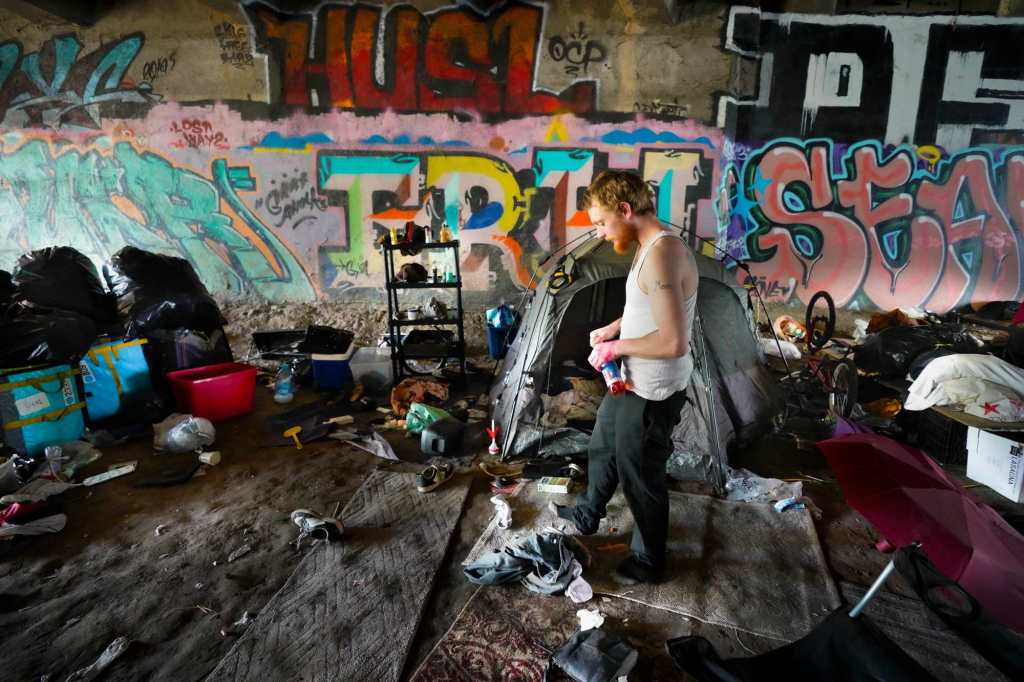
Homelessness in California—and across America—has reached a breaking point. The crisis has climbed to the highest level ever recorded, even as billions more are poured into housing subsidies and bureaucratic programs that promise compassion but deliver only despair.
No one bears the consequences more cruelly than the homeless themselves. Their death rate has soared by 77%, a devastating indictment of a system that prioritizes housing units over human healing.
Communities, too, shoulder the burden— streets overrun, neighborhoods destabilized, and taxpayers funding a model that fails everyone it claims to help.
President Donald Trump’s recent executive order marks the first real course correction in over a decade. By directing federal funds toward treatment, recovery, and accountability, it re-centers homeless policy on a recognition that lasting change requires addressing the root causes of homelessness: addiction, mental illness, and broken lives in need of structure and care.
California, however, is sprinting in the opposite direction. Governor Gavin Newsom’s veto of Assembly Bill 255 makes stories like Michelle’s almost impossible to repeat within the state’s homelessness system. AB 255 would have allowed local governments to spend a portion of their state homelessness funds toward supportive-recovery residences.
Nearly 80% of California’s homeless also suffer from the brain diseases of addiction and mental illness, yet programs that require sobriety and not eligible for state funding.
The journey of Northern California’s resident, Michelle Russo—from despair to stability, from addiction to renewal—embodies the very kind of transformation that Governor Newsom’s veto now stands in the way of.
Michelle’s spiral didn’t begin with drugs. It began in childhood, when food and soda became her refuge from pain. As her weight rose, so did the teasing and bullying, crushing her confidence and feeding a harsh inner critic.
By her late teens, she turned to marijuana and Valium. At 21, a boyfriend introduced her to painkillers. She knew the risks but welcomed the relief. When pills became scarce, heroin filled the void.
Pregnant and trapped in a violent relationship, Michelle clung to both her addiction and the fragile hope her unborn son represented. When Child Protective Services intervened after a brutal altercation, she knew change was no longer optional.
After her son was born, Michelle entered a Sacramento-based program that helped homeless mothers rebuild their lives. She struggled with the structure and left early… only to return months later, realizing she didn’t need comfort. She needed accountability.
The next time, she stayed. She met Renee, a sponsor who became her mentor and godmother, and helped her work the 12 Steps. The program referred her to rehab to deepen her recovery. Later, she entered another program that built on the foundation of discipline, responsibility, and purpose.
Along the way, she repaired fractured relationships with her parents, siblings, and even her grandfather after years of silence.
The common thread in Michelle’s recovery was simple but profound: structure, safety, accountability, and belief. These programs didn’t coddle her— they challenged her and reminded her daily that her life mattered.
“When you’re early in sobriety, you need security,” Michelle says. “The structure gave me that. I needed safety to feel safe letting go.”
Today, at 39, Michelle celebrates seven years of freedom from addiction. She’s built a life once unimaginable— a loving marriage, a home purchased in 2022, and twin babies born in 2023 who now join her son in a thriving, faith-filled family.
Her story demonstrates that housing alone doesn’t heal for the majority of those struggling with homelessness.
The very elements that saved Michelle’s life—structure, safety, mentorship, and faith—are absent from California’s Housing First mandate.
To reverse this deadly trajectory, California must prioritize funding for addiction and mental health treatment within a variety of communal housing settings, not just permanent housing subsidies. It must build a system rooted in structure—clear expectations, milestones, and daily rhythms that restore self-worth—while ensuring safe, compassionate, and accountable environments to ensure those struggling with addiction can endure recovery’s darkest valleys.
Michelle didn’t get better because someone handed her keys to an apartment. She got better because someone handed her a standard and a belief that she was capable of redemption.
What she needed, and what tens of thousands like her need today, isn’t simply a roof over their heads. It’s a system that supports them in restoring their lives.
Michele Steeb is the founder of Free Up Foundation and author of “Answers Behind the RED DOOR: Battling the Homeless Epidemic,” based on her 13 years as CEO of Northern California’s largest program for homeless women and children. She is a Visiting Fellow with Discovery Institute’s Fix Homelessness Initiative. Follow them on Twitter: @SteebMichele and @ DiscoveryCWP



